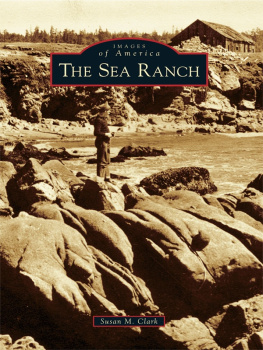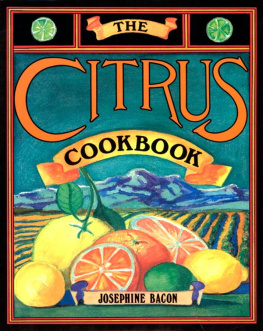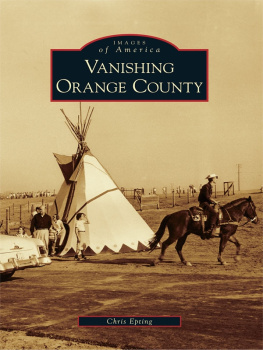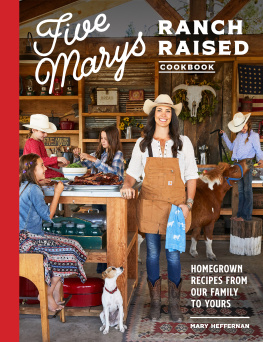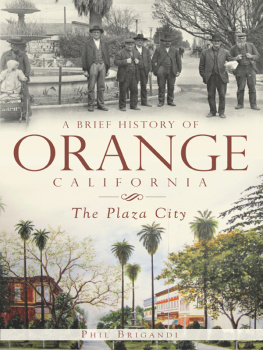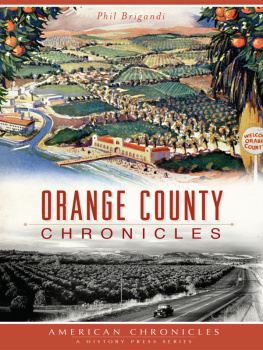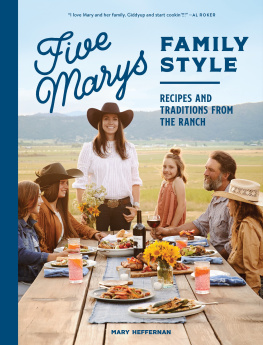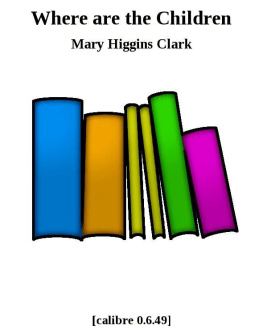

Published by The History Press
Charleston, SC 29403
www.historypress.net
Copyright 2013 by Paul F. Clark
All rights reserved
Unless otherwise noted, all photos and illustrations are from the editors collection.
First published 2013
e-book edition 2013
Manufactured in the United States
ISBN 978.1.62584.527.6
Library of Congress CIP data applied for.
print edition ISBN 978.1.62619.074.0
Notice: The information in this book is true and complete to the best of our knowledge. It is offered without guarantee on the part of the author or The History Press. The author and The History Press disclaim all liability in connection with the use of this book.
All rights reserved. No part of this book may be reproduced or transmitted in any form whatsoever without prior written permission from the publisher except in the case of brief quotations embodied in critical articles and reviews.
To the Children of Yale Grove

Mary Teegarden Clark.
CONTENTS

A portion of an 1896 USGS Anaheim topographic sheet showing Orange and surroundings.
EDITORS PREFACE
Sometime more years ago than I care to admit, I spent most of a night reading a typed manuscript preserved in an old-fashioned leather document holder inscribed Story of California Life by Mary T. Clark. As a thencollege student majoring in history, I confess some experience in pulling all-nighters. But this was special. My father, George H. Clark, who had protected this document for many years, pulled it down from a shelf in our home in Orange, California. The typed Pioneer Ranch Life manuscript by Mary Teegarden Clark rang true to me as history personally lived from 1875 to 1887. Previously, I knew vaguely of Mary Clark from my childhood. I remember being told that she was my great-grandmother and being shown a memorial book collection to her in the Orange Public Library. Relatives back east in Indiana had provided for this civic tribute. I also recall being told that she kept a journal from pioneer times, which as a child I assumed described her covered wagon travels. That night, I discovered her most important workthe core of this booka first-hand account of life in Southern California during the pioneer days.
I quickly realized the value that my great-grandmothers story held, given its spirited and detailed descriptions of California life long before freeways, surfboards and refrigerators. I discussed the manuscript with various local historians and college professors. All agreed on its wider importance. Some encouraged a rush into publication. I sought an estimate from a printer. I received advice in various ways. I knew more was needed to unfold this narrative written down so long ago. Questions about the original document existed. This was a typescript. What happened to any earlier handwritten documents? The front page of this typescript contained a handwritten statement, names of characters are fictions. What did this mean? And could persons in the text be re-identified? Could events be verified? A historical document needed notations and a well-written introductiondemanding more research. The practical considerations of publication costs and time required for marketing, a much greater factor in the 1970s, forestalled any rushing to publication, particularly considering I was then a busy college student with only part-time employment. Over the ensuing years, I kept an eye out, researching microfilmed newspapers, interviewing family members and visiting, as time and place allowed, libraries and archives around the United States. Blessed with good fortune and retirement from full-time employment in 2009, I picked up this project again.
My search over the years failed to uncover any evidence of a handwritten version of Pioneer Ranch Life. A reference in Mary Clarks 1922 obituary speaks of her keeping old note books, suggesting she did possess a handwritten account, but none appear to have survived. Her completion of the memoir by 1906 is demonstrated at the end of , The Flight of the Duchess. Comments made by several relatives confirmed that the typescript derived in the 1920s was the product of Mary Kate Clark (also known as Kate Clark), daughter of Mary. Kate either typed up the document herself or had a professional typist complete the job. She added the last chapter, The Fulfillment, in which she identified herself with the initials K.C. and dated it 1924. Kate obtained the original notebooks while she lived with her mother as a caregiver in La Porte, Indiana. An unfortunate consensus exists that she discarded the written notebooks once typing was finished. By 1926, she left Indiana and returned permanently to California. She lived in Orange, but records show that she also lodged in Hollywood awhile and sought to promote the typescript as a movie screenplay. While Kate engaged in the typing process, she renamed many of the persons in the original document. This was probably intended for privacy, given the consequences of public exposure that a successful motion picture would bring to then-living family members. To my knowledge, no film ever materialized. After failing to catch the eye of Hollywood, the typescript, fictional names and all, sat aside and entered into family legend. Kate spent the remainder of her life in Orange and is fondly remembered within the family as Aunt Kate. After her death, her estate passed to her nephews and nieces, and my father came into possession of the original typescript, while additional copies found limited distribution among other Clark family members.
All this leaves a certain amount of uncertainty about the typescripts originality. How much was Mary Clarks work, and how much could have been Kate Clarks? Fortunately, Mary did produce at least one other document independently that parallels Pioneer Ranch Life. While visiting California during the winter of 191617, she read a paper to the Orange Womans Club. A local newspaper, the Orange Star, printed her essay. Later, in 1938, the Orange Daily News reprinted this earlier Orange Star text, making some slight revisions and updating it with pre-script and post-script commentary related to the Clarks then living in Orange. The January 1917 version of this paper is reprinted (see ) and provides the most direct evidence of the original Pioneer Ranch Life manuscript. The paper both supports and supplements Marys Pioneer Ranch Life story, giving both greater credibility. Of note, some details mentioned in the Womans Club paper appear in Pioneer Ranch Life, while other episodes are dropped. While Kate Clark may have made unknown revisions, the Orange Star article ensures the credible usefulness of Pioneer Ranch Life as Mary Clarks words.
To further deepen this story of pioneer life, I added another text written by her and created in much the same way as the Orange Womans Club paper. Mary Clark read a chronicle of her father, Abraham Teegarden, to the La Porte County Historical Society in Indiana in 1907. This work afterward appeared in the local newspaper the La Porte Daily Herald (see ), and clippings found their way to the historical societys archive. This biography of Abraham Teegarden enhances this publication and underscores Marys pioneer heritage.
Next page


